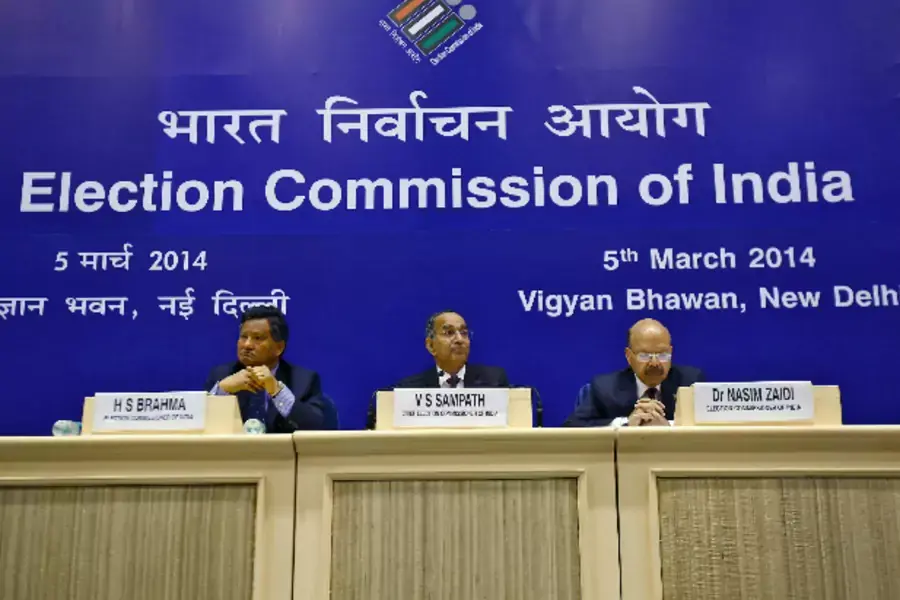More on:
This post is part of a series on the Indian elections.
In the fall of 1990, I got off an Air India flight and landed in Delhi for the first time. I was taking part in a college semester abroad program, and was ready to learn about the world’s largest democracy. Little did I know how much there would be to learn.
That September began India’s autumn of discontent. The Janata Dal-led coalition government headed by Prime Minister V.P. Singh was reeling into collapse, but no one quite knew that at the time. Singh had announced some months earlier his government’s plan to implement the Mandal Commission recommendations, a program of affirmative action steps which had languished in the bureaucratic wilderness for more than a decade. The Mandal Commission recommendations would “reserve” quotas in government employment and in public universities for people from historically subordinate caste backgrounds as a means of righting centuries of historic discrimination.
The public response against reservations was explosive. Student protests began to shut down Delhi for days at a time. On September 19, 1990, a student set himself on fire in protest, with others emulating him in the days to follow. All told some seventy students self-immolated to protest Mandal. For me the enduring image of that month will always be bodies ablaze. The Bharatiya Janata Party (BJP), a coalition ally, broke with the government over the question of reservations and the Ram Mandir movement, and by November 1990, the Janata Dal government had collapsed, with another short-lived government to follow.
That was an era in which caste and religion were the dominant themes of social and political mobilization. That same year L.K. Advani embarked on his rath yatra, a chariot journey across India to build a Ram temple in Ayodhya, and Hindu nationalism was a rising force, with the destruction of the Babri Masjid in December 1992. The Bombay riots of December 1992 and January 1993 pitted Hindu against Muslim. Explicitly caste-based appeals to voters seemed a core feature of politics in north India. Who can forget Lalu Yadav and his rustic appeal to the cowherders of Bihar? Whatever the appeals of identity, no one could say those years were winners for good governance and delivery of services to citizens.
It is amazing today to look back at the early 1990s and see how much has changed in India and in Indian public life. Today, reservations in employment and higher education are a fact of life, and protests take the form of impassioned arguments. Most remarkably, religion—while perhaps never far from the political arena—has been utterly absent from the political campaigns for the upcoming elections to India’s lower house, or Lok Sabha. Caste, too, has been far more limited as a political appeal this election season than in the past, although the policy declared last week to include Jats on the list of Other Backward Classes shows its continued relevance to politics.
Still, the shift away from campaigning focused solely on caste or religion—identity empowerment—has been remarkable. It began in the mid–2000s, with some chief ministers like Nitish Kumar and Naveen Patnaik emphasizing reform and governance in two of India’s poorest states, Bihar and Orissa. In the mid–2000s Gujarat’s Narendra Modi, under heavy criticism following the 2002 riots in his state, focused on governance and growth. Delhi’s Sheila Dikshit served three terms, in which governance was a strong emphasis until the corruption scandals engulfing the 2010 Delhi Commonwealth Games tarnished that legacy. The governance trend has continued over the years, spurred perhaps by the positive demonstration effort, as India’s famously anti-incumbent voters began to reward leadership that delivered better services to their states, shifting the language of politics. But the anti-corruption movement of 2011 and 2012, led at the time by Anna Hazare, Arvind Kejriwal, and Kiran Bedi, and converted into party politics by Kejriwal’s Aam Aadmi Party, has made a big difference in fully transforming India’s national political grammar into one of governance and anti-corruption. Today, both the BJP and the Congress are campaigning on governance, a stance that would have appeared unlikely as recently as five years ago. (Or even a year ago).
And so election season for the largest exercise of democracy in world history has begun. Some 814 million Indian citizens are eligible to vote, with 23 million in the eighteen-to-nineteen-year age bracket. Polling will take place at 930,000 stations in nine phases (complete schedule here) from April 7 to May 12, with results counted on May 16. The numbers are always mind-boggling. And inspiring. As the major parties release their election manifestos, we’ll have more to analyze, and to gauge how their positions would affect India.
But this year is different already.
Follow me on Twitter: @AyresAlyssa
More on:
 Online Store
Online Store
